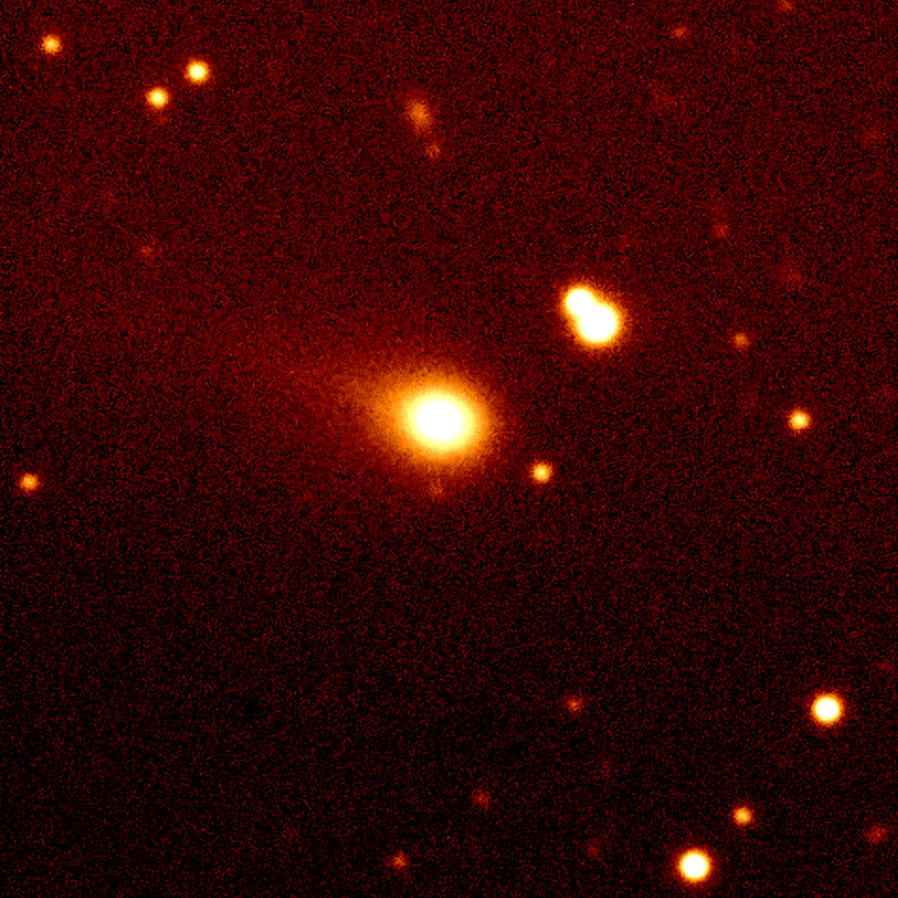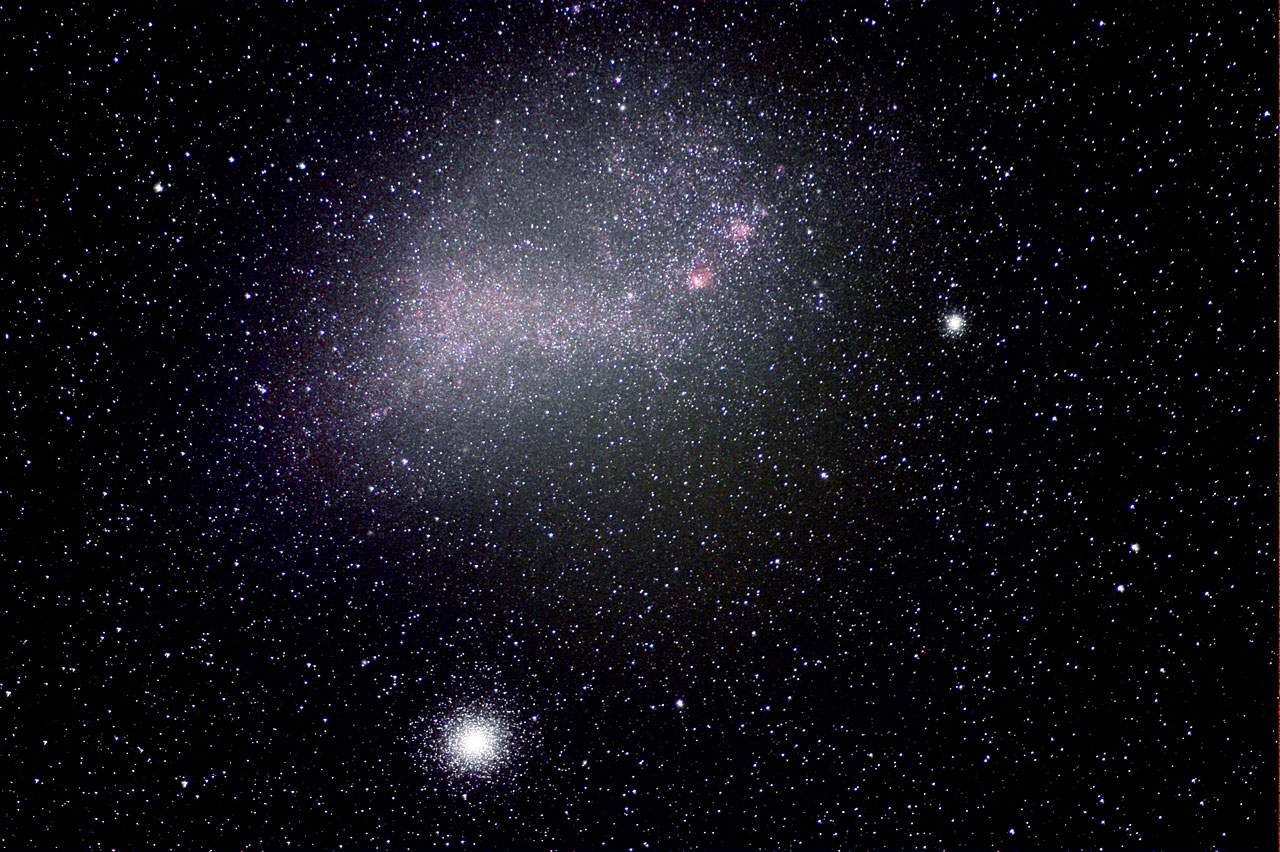
Astronomers obtain first image of the black hole at the center of the Milky Way galaxy
A new advance in astronomy was achieved by the Event Horizon Telescope (EHT) team with the participation of CATA astronomers from Chile.
It has a mass equivalent to that of four million suns and is located 27,000 light-years away from Earth. Until now, astronomers only knew of the existence of Sagittarius A* – the supermassive black hole located at the center of our galaxy – from the behavior of the stars and objects around it, which showed signs of orbiting around something invisible, compact and very massive.
Now, the scientific team of the Event Horizon Telescope (EHT) initiative announced that they have obtained the first direct visual evidence of the supermassive black hole at the center of our Milky Way galaxy. This is an international effort involving more than 300 researchers from 80 institutes around the world, including astronomers from the Universidad de Concepción and the Centro de Astrofísica y Tecnologías Afines (CATA), involved in obtaining this new image.
The image captures the light deflected by the black hole’s powerful gravity, a feat that required the use of eight radio telescopes working in combination, including ALMA and APEX, belonging to the European Southern Observatory (ESO), from northern Chile. This is the same consortium that in 2019 revealed the first image of a black hole called M87, at the center of the Messier 87 galaxy, considered the finding of the year by Science Magazine.
Neil Nagar, astronomer at the Universidad de Concepción and CATA researcher who participated in both initiatives along with astronomer Venkatessh Ramakrishnan, says that “we are proud to be part of this international collaboration for more than 10 years. Three years ago we delivered the first image of a black hole in another galaxy, and now we have achieved a second image, this time in our own galaxy. Although the black hole is a thousand times smaller and less massive, it is also a thousand times closer”, explains the astronomer, who also directs the Titans Millennium Nucleus.
Rodrigo Herrera-Camus, astronomer at the Universidad de Concepción and CATA researcher, explains the challenge behind an image like this one. “It’s not just one telescope, but multiple telescopes located in different parts of the Earth, including Chile thanks to the ALMA and APEX observatories, which together form the equivalent of a telescope the size of the Earth. And this allows us to have high-resolution images that would otherwise be impossible to obtain”.
Despite the greater closeness of the image of the black hole in the Milky Way with respect to the previous image, obtaining it represented a challenge of proportions that took several more years of work. The science team had to develop sophisticated new tools to explain the motion of the gas around Sagittarius A*, which will allow them to test theories and models of how gas behaves around supermassive black holes.
Ezequiel Treister, astronomer at the Astrophysics Institute of the Catholic University and deputy director of CATA, explains that this is due to the difference in size between the two black holes, which generates effects: “If in M87 everything happens more slowly and changes can take days to occur, in Sgr A* everything happens in minutes. In comparison, we could say that the Milky Way hole is relatively young, it is not still at any time. In contrast, M87 is an older, more evolved object and moves more slowly,” he explains.
Astronomers point out that the properties of this image are predicted by Albert Einstein’s Theory of General Relativity. Andrés Escala, astronomer at the University of Chile and CATA researcher, explains that “For example, the size of the ring coincides very well with these predictions. In addition, its characteristics are similar to the image obtained in M87, despite the fact that the black hole in that galaxy is a thousand times more massive than the black hole in our Milky Way”.
Dr. Neil Nagar adds that they are already working on projects to obtain more images of black holes, which will be key to study their influence on the formation and evolution of galaxies. “We have two black holes of very different masses. The more diversity of black holes we record, the more we can learn about their physics,” he concludes.
IMPORTANT:
Recent news
-
 Publicado el: 05/12/2025CATA launches Applied Research Fund 2026
Publicado el: 05/12/2025CATA launches Applied Research Fund 2026 -
 Publicado el: 01/12/2025The astronomical experience was part of the 4th Ladera Sur Festival.
Publicado el: 01/12/2025The astronomical experience was part of the 4th Ladera Sur Festival. -
 Publicado el: 25/11/2025Students from Angol held an astronomy workshop with CATA
Publicado el: 25/11/2025Students from Angol held an astronomy workshop with CATA -
 Publicado el: 15/11/2025Leonids meteor shower 2025: What are they, when will they be visible from Chile, and what can we learn from them?
Publicado el: 15/11/2025Leonids meteor shower 2025: What are they, when will they be visible from Chile, and what can we learn from them? -
 Publicado el: 13/11/2025CATA researcher strengthens international ties during visit to the Center for Astrobiology in Madrid
Publicado el: 13/11/2025CATA researcher strengthens international ties during visit to the Center for Astrobiology in Madrid
Categories list
- Acknowledgments 21
- Astrobiology 6
- AstroCluster 1
- Black holes 18
- Corporativo 57
- Cosmology 5
- Descubrimientos 22
- Disclosure 73
- Exoplanets 13
- Extension 6
- Galaxies 21
- Galaxies formation 5
- Inter y Transdisciplina 4
- Local Universe 16
- Publications 6
- Sin categorizar 34
- Solar System 21
- Stellar formation 8
- Technology 15
- Technology Transfer 17


